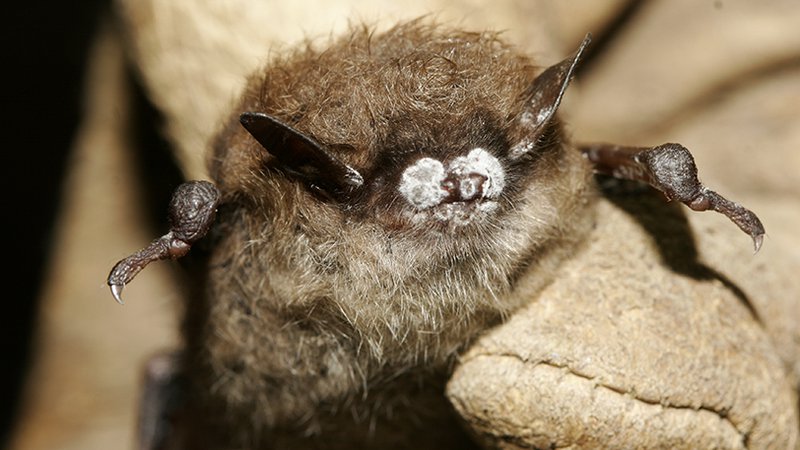Arkansas bat species declining from White-nose Syndrome
BY agfc
ON 10-25-2017

Oct. 25, 2017
Surveys conducted by researchers across Arkansas last winter found that populations of several species of Arkansas bats are beginning to fall due to the impact of White-nose Syndrome. White-nose Syndrome is a disease that affects hibernating bats and is named for the white fungus that appears on the muzzle and other parts of hibernating bats. The disease is associated with extensive mortality of bats in eastern North America
White-nose Syndrome was first found in the state in 2012 and is now present in at least 15 Arkansas counties. According to Blake Sasse, the Commission’s nongame mammal program leader, “We’re still in the early stages of the spread of this disease as only about half of the caves we monitor for rare bats now have WNS or the fungus that causes the disease.”
The tri-colored bat, once common in most Arkansas caves and mines, declined by about 66 percent from 2015-16 to 2016-17 and the statewide estimate for little brown bats in Arkansas went from around 1,800 bats in 2009 to only 80 last winter.
Another species, the northern long-eared bat, was listed as Threatened by the U.S. Fish and Wildlife Service solely because of WNS.
“From what I’ve heard from those working in the Ozarks this summer, they’re catching a lot fewer northern long-eared bats than in the past and the declines seen elsewhere in the range of this species are now being felt in Arkansas,” said Sasse. “The only good news is two of our endangered species, the Ozark big-eared bat and the gray bat, don’t yet seem to have been impacted by WNS.”
First documented in New York in late 2006, WNS has spread rapidly across the eastern United States and Canada, and the fungus that causes WNS has been detected as far south as Mississippi and as far west as Washington. It has been seen in 31 states and five Canadian provinces.
Bats with WNS act strangely during winter, including flying outside in the day and clustering near the entrances of caves and mines where they hibernate. Bats have been found sick and dying in unprecedented numbers in and around caves and mines. The disease has killed more than 5.7 million bats in eastern North America. In some hibernacula, 90 to 100 percent of bats have died.
Bats are an important part of our nation’s ecosystems, and provide significant pest control for American farmers, likely saving the agricultural industry at least $3 billion each year, or approximately $74 per acre for the average farmer.
If you own a cave or mine that has had clusters of more than 20 bats or more than 100 total bats in it during past winters, please contact Sasse at blake.sasse@agfc.ar.gov to see if there may be an opportunity to conduct a bat survey this winter. Landowners also can help protect bats by ensuring anyone visiting caves decontaminate any gear before and after they enter. Decontamination protocols and other information about WNS are available at www.whitenosesyndrome.org.
Recent News
Subscribe to Our Weekly Newsletter E-mails
Don’t miss another issue. Sign up now to receive the AGFC Wildlife Weekly Newsletter in your mailbox every Wednesday afternoon (Waterfowl Reports are published weekly during waterfowl season and periodically outside the season). Fishing Reports arrive on Thursdays. Fill in the following fields and hit submit. Thanks, and welcome!


